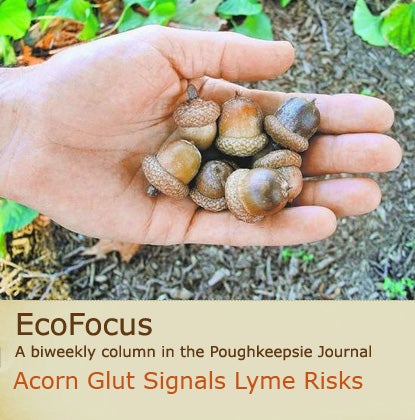December 06, 2010
 Here’s something to consider for those who like to plan ahead. More acorns in 2010 means more Lyme-infected deer tick nymphs in 2012. According to Dr. Richard Ostfeld, a biologist at the Cary Institute for Ecosystem Studies in Dutchess Co. New York, there were more acorns this year than in the 20 years he’s been monitoring seasonal acorn production. And while lots of woodland animals depend on acorns for nutrition, white-footed mice, which serve to infect larval ticks with Lyme disease bacteria, should be doing especially well next summer when the blood-hungry larvae become active. These larvae should find a higher-than-normal number of Lyme-infected mice to feed on. Mouse-fed ticks tend to survive well, and so, the tick infection rate will likely soar. But since larvae don’t feed until August, it will be the following Spring—that’s right, 2012—when those ticks emerge as nymphs.
Here’s something to consider for those who like to plan ahead. More acorns in 2010 means more Lyme-infected deer tick nymphs in 2012. According to Dr. Richard Ostfeld, a biologist at the Cary Institute for Ecosystem Studies in Dutchess Co. New York, there were more acorns this year than in the 20 years he’s been monitoring seasonal acorn production. And while lots of woodland animals depend on acorns for nutrition, white-footed mice, which serve to infect larval ticks with Lyme disease bacteria, should be doing especially well next summer when the blood-hungry larvae become active. These larvae should find a higher-than-normal number of Lyme-infected mice to feed on. Mouse-fed ticks tend to survive well, and so, the tick infection rate will likely soar. But since larvae don’t feed until August, it will be the following Spring—that’s right, 2012—when those ticks emerge as nymphs.
